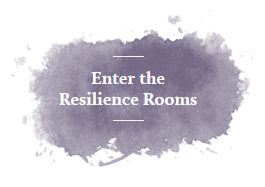As the New Year is approaching it may be a good time to reflect on, evaluate, and re-calibrate the way in which we approach our parenting. We tend to protect, or in some instances over-protect our children to assuage them of any suffering or anguish. With all the distress our children naturally must deal with such as mass shootings, terrorism, the wave of sexual harassment that’s coming to light, among other things, it’s unconscionable to think about not trying our very best to alleviate them of any further discomfort.
There’s great power in guiding children to be comfortable with being uncomfortable. Studies have shown that the ability to embrace negative feelings can provide a plethora of benefits (see https://www.thecut.com/2017/08/youll-be-happier-if-you-let-yourself-feel-bad.html for the full article). Those who accept all their emotions without judgment tend to be less likely to ruminate on negativity, less likely to try to suppress mental experiences, and less likely to experience negative “meta-emotional reactions” (i.e., feelings about the feelings and thoughts about the thoughts).
Proactively seize those moments when they present themselves. Children are no different than us as adults; they want to avoid discomfort at any cost. A cycle of avoidance or distraction strategies often get instilled to cope with adversity and stress. Kids negatively cope by becoming defensive, underachieving, socially isolating, lying, drinking alcohol and using substances, overeating, self-harming, becoming addicted to social media and gaming, etc.
The initiative to develop “resilience” and “grit”, is both critical and necessary, especially because of all that our children are contending with presently. Without solid coping skills, they’ll have less of a chance to thrive in the face of adversity, now and in the future ahead. The world is so rapidly changing that they need to be equipped to deal with sudden changes and circumstances that they may be exposed to prematurely and are not necessarily developmentally mature enough to handle.
We can all relate to avoiding “hard work” and “negative emotions” or behaving on impulse to avoid urges or uncomfortable emotional or physical sensations. We find crafty ways to rationalize our thoughts and feelings and masterful ways to distract ourselves from discomfort that gets evoked. We’re just doing what we were taught to do and what society dictates as being “the most helpful.” We’re instructed that we’re always “supposed” to be happy. If we discover that we’re not, we’re conditioned to find immediate ways to gain happiness.
Be open to allowing your children to experience discomfort, become curious about it, observe it, and behave differently on behalf of it. When your child’s mind tells him or her to avoid or distract from something, ask them to identify what fear or discomfort they’re avoiding. Help them to identify the fear or discomfort and remind them of their values. For a helpful values exercise you could perform with your child see: https://www.nwabr.org/sites/default/files/ValuesActivities.pdf. Inquire whether avoiding or distracting is allowing them to lean in or away from these values. If they are leaning away from the values that are meaningful to them, suggest that they consider doing things differently with a willingness to be with what ever thought, feeling, or bodily sensation surfaces and whatever discomfort gets evoked.
Helping your children to build their resilience muscle, helps them to increase their self-confidence, self-compassion, and personal development. Their self-confidence improves when they’re able to take inventory of what they were able to accomplish despite the discomfort and adversity. It provides them with the will to take on future challenges and the belief that they can work through these challenges and others, even if they must face discomfort and uneasiness. Self-compassion comes from them noticing, being with, and accepting their physical sensations, feelings, and emotional states. Their personal development gets enhanced when they learn something new about themselves and use that information to take steps toward improving their functioning and overall quality of life.
How To Help Your Children To Be With The Discomfort:
- Reflect on how you feel about identifying and facilitating your children’s discomfort. Recognize and work through any barriers that may get evoked that can sabotage this process.
- Identify and label emotions for kids (for a variety of charts for them to choose from go to: https://www.pinterest.com/friedahoppen/work-feelings-gevoelens/) and take their emotional temperature (http://www.freeprintablebehaviorcharts.com/feeling%20chart%20pdf/emotional%20thermometer.pdf) to enable them to gain insight into the thoughts and feelings that they may make attempts to deny, avoid, or distract from.
- Ask them what they imagine would happen if they were to experience the thought or feeling that they are inclined to deny, avoid, or distract from. What’s the best that could happen? What’s the worst that could happen? What’s most likely to happen?
- If they didn’t go through this process of denying, avoiding, or distracting from, what would they be doing that they’re currently missing out on?
- Inform your children that negative thoughts and emotions are not dangerous, it’s just uncomfortable and something they can effectively and successfully cope with.
- Teach your children that our minds often confuse normal and average stress with distress. We do not want to entertain uncomfortable thoughts, feelings, or bodily sensations. The distress comes when we struggle with and attempt to get rid of our stress which is due to common and typical stressors. It manifests with intense and uncomfortable thoughts, feelings, and reactions. We may say, “I shouldn’t be stressed about this” or “If I’m stressed it means that I can’t handle things.”
- Convey that all thoughts, feelings, and bodily sensations are welcome because they’re typical and natural. They inevitably teach us about ourselves, what is important to us, and what we want out of life. They can notice their thoughts, observe them, and especially learn from all of them.
Commit to a practice of helping your children to become comfortable with being uncomfortable. Help yourself and your children to enter the new year with greater confidence, self-compassion, and personal growth.
Blog published via Huffington Post.


